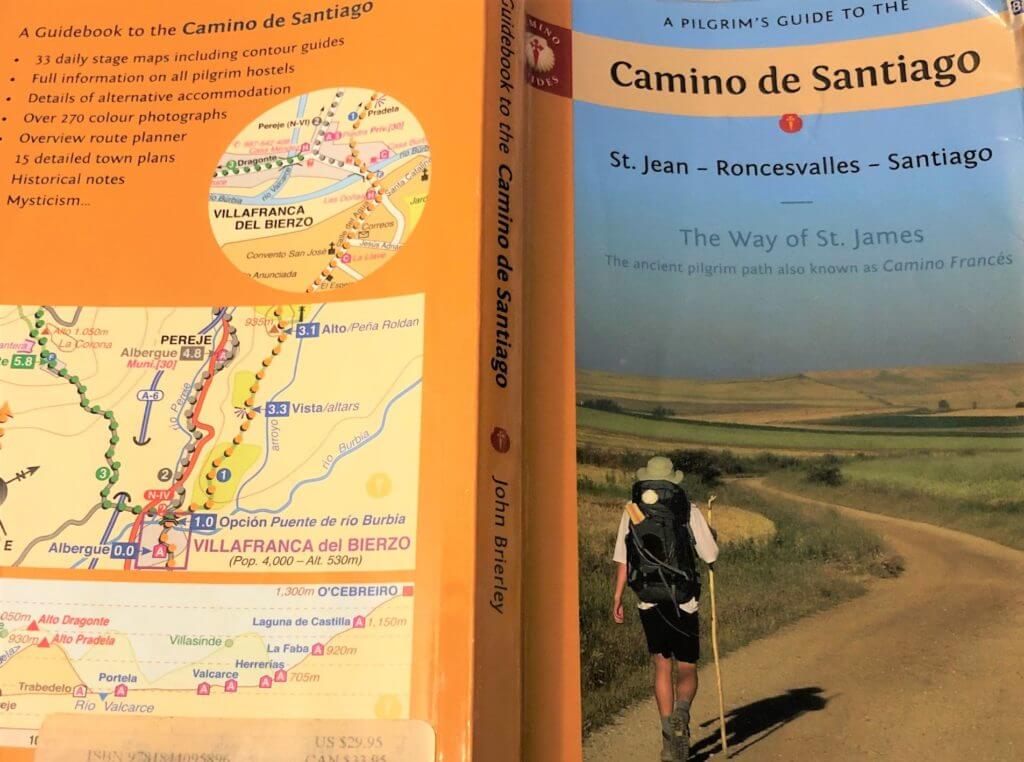2. Grab your Pilgrim's Guide
In this day and age, carrying a Guide Book with you on a walk might seem superflous, after all, we have apps for that! However, I quite often couldn’t get reception along the path, so having a tangible resource was a godsend. Plus, in our real lives we spend so much time WIRED to absolutely EVERYTHING, walking the Camino is the perfect time to BE FREE! (you will feel true freedom, you will).
I have a love-dislike relationship with the guide book ‘A Pilgrim’s Guide to the Camino de Santiago‘ (by John Brierley) that is commonly used to guide peregrinos along the Camino. On the downside, it has a bit of a mystical, wishy-washy waffle going on. I’m sure many readers love it, but I just couldn’t connect to it. Also, there are dots for maps which feel like they’re a little bit undercooked.
However, I love this book because:

- when you’re not getting any reception to check where you are on Google Maps, you can use the dotty maps to find your way forward
- the guide offers excellent profiles of the terrain so you can psyche yourself up for what lies ahead
- the maps seem to cover all of the villages you pass through, but most importantly, places you can stay and their contact details. Many of these little places were not marketing themselves online so wouldn’t have come up on maps or in searches.
- he has fabulous snippets of advice, like the 2.8km detour off the path from Uterga to Enate, which I found pretty increíble!
- the author had a calling to write the book to help other pilgrims, and it did help me a lot. I guess I could say that the author found a place in my journey equally as important as the monk at O’Cebreiro who initiated the idea of marking the path with arrows to guide pilgrims on their way.
As for apps, they are definitely worth looking into, especially in the planning stages, but I’d honestly recommend you set it up to check it once or twice a day and then disconnect.
